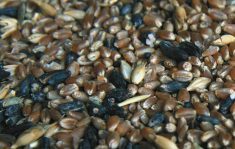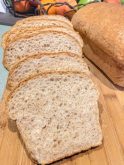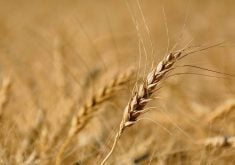Canadian wheat exports are known for their quality internationally, but the country may be able to sell more grain and receive better returns by growing different classes of wheat or adjusting current grading standards, said presenters at the Wild Oats Grain World conference in Winnipeg, Feb. 27.
Lawrence Yakielashek, president of Alfred C. Toepfer (Canada) Ltd., said rising world populations and increasing demand for food are leading to growth in the international wheat trade. However, Canada’s participation in that expanding market is holding steady, while other lower-quality exporters are increasing their share. He said part of the reason for that was the fact that high-protein Canadian Western spring wheat was overpriced into many markets which were looking to cheaper alternatives for their milling needs.
Read Also

VIDEO: PhiBer drone carrier wins ag tech innovation award
PhiBer Manufacturing’s Dash Carrier trailer can land, recharge and refill four drones. The Manitoba company won the ag tech innovation at Ag in Motion 2025.
“We don’t have to be the best quality in the world,” said Yakielashek, noting that many destinations can’t afford high-priced Canadian wheat. As an example, he said that rather than “producing a BMW,” Canada might be better off marketing “a Ford” quality wheat.
If that were the case, Yakielashek said Canada could easily produce and market 30 million tonnes of mid-protein wheat.
Meanwhile, there are also many occasions where current Canadian wheat grade standards cause the country to sell higher-quality grain to customers who would be willing to accept a much lower standard.
Fraser Gilbert of SGS Canada and a former chief grain inspector with the Canadian Grain Commission, provided a number of examples of tenders which came in and were then filled by wheat that had much better protein or falling numbers than requested, or had less ergot or other downgrading factors than the customer would have accepted.
“We often give the customer something much better than they asked for,” he said, adding that such a practice may do a disservice to the value of Canadian grain.
Using the case of ergot as an example, Gilbert said a problem with the current Canadian wheat grades was the fact that to reach No. 1 quality, wheat should have less than 0.01 per cent ergot. However, the EU, Russia, Ukraine and the U.S. will all accept wheat with ergot of up to 0.05 per cent.
As a result, Canadian wheat that meets the requirements of a No. 1 grade in every other factor, but has an ergot level of 0.04 per cent, is graded as a No. 3 and is priced accordingly. While ergot is a food safety issue at higher levels, Fraser questioned why Canada was downgrading wheat from a No. 1 to a No. 3 when the customer is using it for the same thing in the end.
The Canada Grain Act is currently under review, and Fraser said part of that review should focus on improving the grading system to make it more objective and efficient.



















